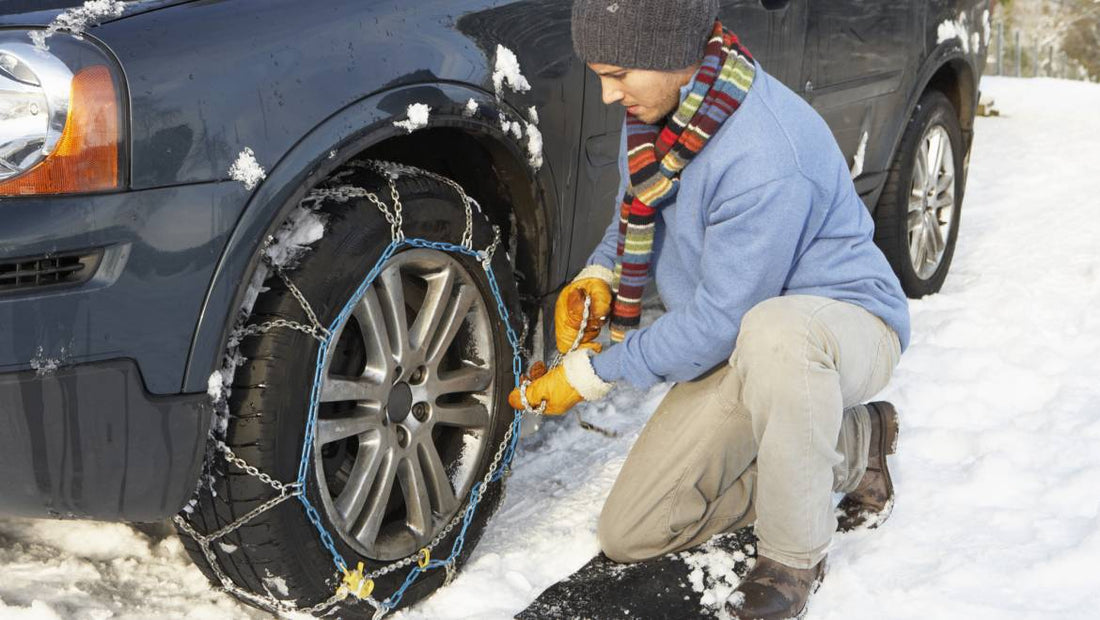With the weather conditions encountered during winter, motorists must be extra careful when driving. Equipment such as snow chains is suitable for driving on snowy or icy asphalt. However, installing these accessories can quickly become a headache. Some explanations are necessary for safe journeys.
THE IMPORTANCE OF SNOW EQUIPMENT
During the winter period , it is essential to remember to equip yourself with the right equipment to ride without the slightest risk. In a certain number of departments, the Mountain II law even makes them compulsory every year from November 1 to March 31. Chains are particularly known for greatly reinforcing the grip of the wheels on the snow.
Very effective, these metal chains allow you to move much more easily on fresh or icy snow. However, you will need to take the time to remove them when leaving this portion of the road. Users will also need to familiarize themselves with the chain installation technique, which is often complex for beginners. To save time, it is possible to chain only the wheels of your front axle.
INSTALLATION OF 2 OR 4 CHAINS DEPENDING ON VEHICLES
Motorists are regularly asked this question: should snow chains be installed on 2 or 4 wheels? To answer this, you will need to take into account the propulsion mode of your car. On a front-wheel drive vehicle, snow chains should only be placed on the front wheels to go faster while still driving safely. On the rear-wheel drive vehicles , this time you will have to think about properly equipping the 4 wheels. This precaution is necessary to guarantee traction at the rear without losing grip of the front wheels.
In the case of vehicles with 4-wheel drive, users will often hesitate about what to do. You will need to install snow chains on all 4 wheels here. This installation, longer and more tedious, is obligatory for people driving a 4×4, for example. Easy installation is possible by using automatic tension chains.
If you are wondering whether to put snow socks on 2 or 4 wheels, be aware that the legislation is the same as for chains. All drive wheels must be equipped to comply with the regulations set by the Mountain II law since November 2021.
THE LIMITS OF SNOW CHAINS
Although safer for driving during the winter , the chains present several significant defects which limit their use by motorists. Their installation is often long and not very pleasant. As their installation is only possible when it starts to snow, it is common to wait until the last moment to install them. Laying on the side of the road in cold conditions, sometimes at night, proves difficult most of the time. In addition, to avoid damaging the chains, it is essential to stop to remove them once there is no more snow on the road.
Not all vehicles can be equipped with “classic” chains otherwise. Depending on the model, “specific” chains are to be expected. Finally, cars with lower wheel arches simply cannot be fitted with chains without damaging the vehicle.
For these reasons, many road users today prefer snow socks, which are easier and quicker to put on.
MUSHER OVERTYRES, AN ALTERNATIVE TO SNOW CHAINS
For driving on snowy roads, particularly as part of the Mountain II law , snow tires are not the only option. Motorists can resort to other equipment such as snow socks. Among the products approved on the market, Musher overtires have many advantages. These are anti-slip snow socks based on 3D shape memory knitting. This particularity gives them exceptional grip and resistance on snowy or icy asphalt.
Compared to chains, these overtires present several significant advantages. They are compatible with all vehicles, including non-chainable ones. Their assembly takes around 5 minutes by a single person, compared to 15 to 20 minutes for snow tires on average. Easy-to-use packaging (gloves, sleeve, mat and waterproof storage bag) is provided for your convenience.
A notable strong point compared to chains, Musher overtires do not have to be removed to drive on dry asphalt. It is possible to still keep them to travel up to 150 km at a speed of 50 km/h. You will finally appreciate the fluidity of driving once these overtires are equipped. You won't experience any vibration while driving due to their unique seamless memory foam design.
